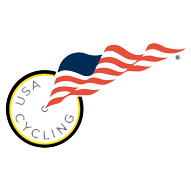Close Encounters with the Insect Kind
Cycling is a great sport and the summer season is the best time of year to ride your bike. Out in the sunshine, wind blowing through your hair. Everything is going great until you collide with a bee or a wasp…they are small, but boy do they pack a punch. Actually, it’s more of a sting! Ouch! That’s right, you’ve just been stung. Now what?
A bee sting hurts, but most people are not allergic to them. For those who are allergic to bee or wasp stings, you should be sure that this is included in your medical history forms, and that your riding partners, teammates and coaches are aware of this before each ride. If you are allergic to bee stings then you need to be sure you have a medical plan in place and carry treatment in your riding kit. The allergic reactions associated with bee stings can vary depending on individual sensitivities and the location of the sting. If you are very sensitive or if a sting in a serious location like the mouth or the neck, could cause serious problems, then you need to be sure that you have an ‘epi-pen’ on hand. This should be in your seat pack and in your bike bag in the car as well.
What about those of you who aren’t allergic to bee stings, but you still just got stung. Now what? Well, there are lots of ‘urban remedies’ out there. I’ve heard of people using everything from ice, butter, alcohol and chewing tobacco for a bee sting. What works and what doesn’t? I went on-line to search out a strategy that you can use when out on the road.
Bees only sting once. This usually is fatal to the bee as the stinger has a large barb which catches in your skin and it removes the venom sack from the bee. Wasps can bite you multiple times. If you are stung while riding, then you need to carefully slow down and pull off at a safe place. Try not to ‘freak out’ and swerve into traffic or crash! I once had a yellow jacket fly into my unzipped jersey and it got me 5 times before I was able to work my way to a safe stopping spot!
First, if you’ve been stung, check to see if the stinger and venom sack are still in your skin. If so, then remove it as quickly as possible. The venom sack will continue to contract and pump venom into your skin. If you squeeze the sack while removing the stinger, this too can inject more venom. Best thing to do is quickly and carefully scrape the stinger up and away with something sharp, like the edge of a dollar bill, Clif Bar wrapper or even a sharp finger nail.
Next, if you have access, get some ice on it. This helps by reducing the circulation to the site and will help reduce the spread of the venom and the inflammation associated with the allergic reaction.
There are 2 types of remedies. Pharmaceutical/drug store items and home remedies. Of the drug store items Caladryl lotion and hydrocortisone cream tend to work best. Caladryl has both calamine lotion and bendryl medication to help control the inflammatory response associated with the allergic reaction caused by the venom. It tends to help with both the pain and the itch. The hydrocortisone cream acts similarly, but is a ‘cortisone’ based cream. Overall I’ve found the Caladryl cream to work best and is a great addition to the bike bag. The insect bite sticks, which tend to be topical anesthetics or alcohol based tend to work poorly. Caladryl also works well for mosquito bites and poison oak. Taking Benedryl medication pills can help if you have severe pain or swelling, but this medication tends to be sedating, which means it can make you sleepy, so you don’t want to take it while riding your bike. It is a good idea to have some Benadryl in your bike bag so if necessary you can take it after your ride.
There are many home remedies, but the home remedy that tends to work great if you don’t have access to a pharmaceutical creams, is toothpaste. The exact mechanism of how this works is unclear but it is likely secondary to its neutralizing properties, which helps counteract the acidic nature of the venom.
In summary, if you are allergic to bee or wasp stings, then be prepared. You will want to wear a tag that shows you are allergic, let your riding partners knows well ahead of time and be sure to carry an EpiPen that you can use in an emergency. Otherwise, once you are stung, don’t lose your concentration and carefully pull over to a safe location, then carefully remove the stinger and get some ice on it. It’s a good idea to get a small bottle of Caladryl for your bike bag and apply it as soon as possible. You should also be sure to check with your family doctor to ask if your allergic reactions to bee stings have any additional requirements.














